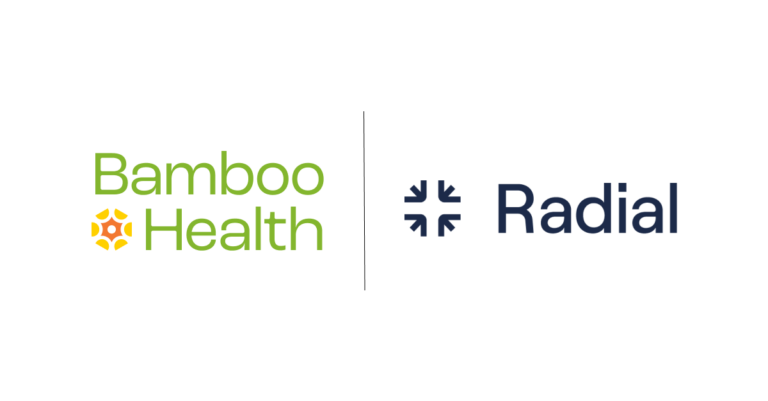True wellness requires a comprehensive, whole-person care approach. For clinicians to truly support the comprehensive health needs of individuals in their care, organizations from across the healthcare continuum must come together to overcome barriers to physical and behavioral healthcare access. Only then can providers, patients, community resources, health plans, government healthcare agencies and other entities break down silos across the healthcare industry to access more cohesive care insights and improve outcomes.
What Is Whole-Person Care?
In a nutshell, whole-person care refers to holistic care for the whole-person rather than isolating a single health challenge or diagnosis. Care teams with a whole-person care approach look at both body and mind in developing attainable, effective care plans to ultimately create a better life for everyone experiencing physical and behavioral health disorders. It acknowledges that health outcomes depend on the intersection of many different factors, such as an individual’s specific health history, genetics, environmental factors and socioeconomic status. This patient-centered approach leverages a wide range of resources to provide seamless, high-quality and effective care.
Some of the resources often used in whole-person care include behavioral health integrations, coordination with other providers, like long-term care facilities and home health services, and additional services like peer support and non-emergency transportation.
To deliver these services and communicate with many other entities, healthcare organizations must enlist strong care coordination efforts with Real-Time Care Intelligence™ to provide actionable insights during pivotal care moments.
How Does Whole-Person Care Help?
One of the major benefits of whole-person care is its effects on high-risk, high-need populations and those dealing with multiple chronic conditions. For many people, these problems are entangled. Approximately 1 in 5 patients suffer from mental illness and substance use disorder (SUD), and many of these individuals have other physical health comorbidities that make it difficult to address without tackling underlying needs. Whole-person care takes a comprehensive approach to helping a patient overcome these issues.
On a larger scale, whole-person care supports population health overall. Data from whole-person care initiatives might reveal a community’s need for more SUD resources. Health systems can then focus on meeting that demand with rehabilitation clinics, support programs, provider collaboration tools and other relevant initiatives to improve access and reduce the cost of care. Expanding care to more people and meeting community needs can help improve population health and minimize costs overall.
The Role of Care Coordination
The need for specialized providers across the healthcare spectrum makes communication critical. Care coordination is vital in seamlessly connecting the people involved in whole-person and patient-centered care. The process of care coordination is all about delivering the most appropriate care in the moments it matters most. Different members of the care team should be able to stay on the same page with record sharing, patient alerts and resource visibility. With more streamlined care coordination tools, providers can:
- Manage referrals to specialists and community partners to better facilitate transitions of care
- Streamline case management by integrating systems to store information in one place
- Assist in developing a proactive care plan and efficiently share critical information with other members of the care team
- Establish accountability and continuity of care between providers and facilities
- Stay compliant with regulations and laws
- Support interoperability and integration with tools
- Make personalized, evidence-based decisions
Consider how care coordination can help someone with multiple conditions. Let’s look at the example of Ruth, a 32-year-old who arrives at the emergency department (ED) due to a suspected substance overdose. Providers within hospitals and health systems can leverage care collaboration tools such as Bamboo Health’s prescription drug monitoring programs and Pings™ to determine Ruth’s previous history. The provider can then see that Ruth has been seen three times in last 90 days at other EDs for overdose and associated medical conditions, resulting in costly inpatient stays.
Along with detailed clinical history, providers can quickly search open bed boards via OpenBeds® at inpatient or outpatient behavioral health facilities, facilitate smooth care transitions and meet government reporting requirements. Knowing that Ruth could benefit from more appropriate long-term care outside of the ED setting, the provider can connect Ruth to longitudinal care with a streamlined referral process, ultimately helping improve patient outcomes and inpatient utilization. If another medical condition appears later on during another pivotal moment in Ruth’s care journey (such as if she were to make a call to the 988 Crisis Lifeline, need follow-up care or appear at the ED or a post-acute care facility), all care teams can access contextual details about treatment to streamline care and reduce costs.

To give other examples, pharmacies can also leverage prescription drug monitoring programs (PDMPs) to monitor controlled substance histories during dispensations. Health plans can help their members with care management by providing coverage for more wide-ranging services and promoting preventive care. Some can cover various behavioral health treatments and work with providers to provide whole-person care. Health plans can also encourage providers to adopt care coordination efforts and help process claims reviews closer to real-time.
Without strong care collaboration efforts, these daily processes become much more challenging. In a typical healthcare journey, an individual in need of care has many opportunities to experience the disjointed nature of working with multiple providers. Care coordination and whole-person care software and programs can streamline and simplify patient care. Providers can share information, even from disparate systems and documentation processes, and support patients in navigating a complicated network of providers, health plans and other resources.
Support Your Whole-Person Care Initiatives with Bamboo Health
If you’re looking for ways to improve whole-person care for your patients, you can connect to the most powerful care collaboration network in the country to leverage whole-person care insights and improve lives during pivotal care moments. Stay connected to other providers in Bamboo Health’s network and gather the complete picture of your patients’ health histories.
Bamboo Health empowers healthcare organizations to improve behavioral and physical health outcomes through the most powerful care collaboration network with Real-Time Care Intelligence™. By providing real-time insights during pivotal care moments, clients are enabled to perform life-improving actions and deliver seamless, high-quality and cost-effective whole-person healthcare. From coast to coast, Bamboo Health partners with all major retail pharmacy chains, 52 states and territories, 100% of the top 10 best hospitals and more than half of the country’s largest health plans to improve more than 1 billion patient encounters annually. Contact us today to learn more.



